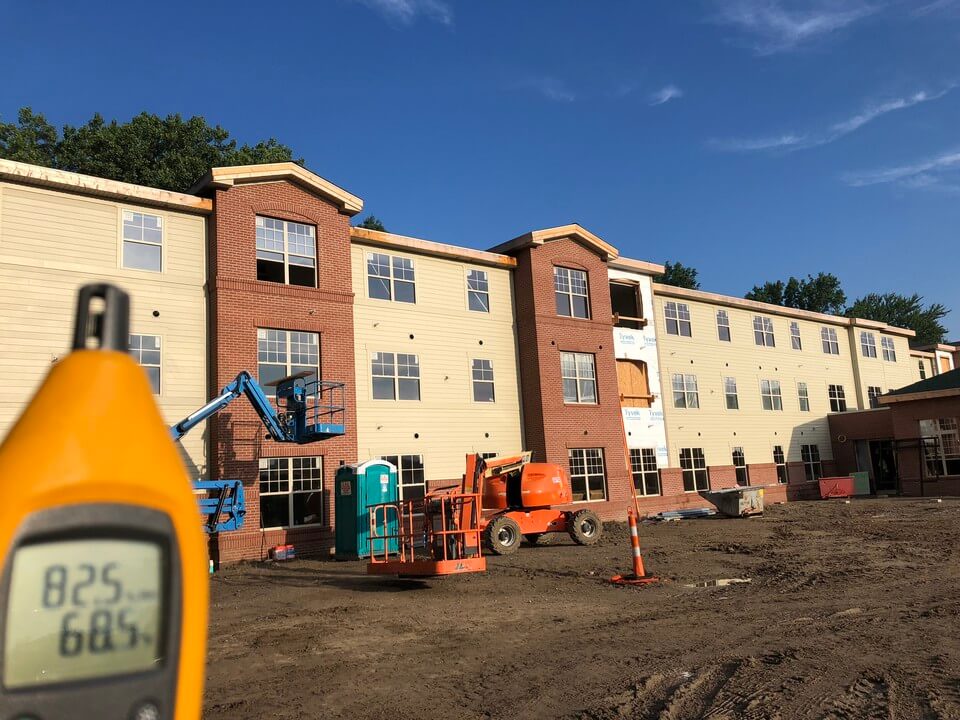Valley Bridge Senior Living – Persistence Personified
Posted by Matt Milos on Sep 25th 2018
 If your project schedules have included drywall and finishes this summer you already know that this year has been challenging, with high humidity levels starting in early spring with little relief through the summer. Completion dates, however, have no empathy for weather-related delays and the work must push ahead regardless.
If your project schedules have included drywall and finishes this summer you already know that this year has been challenging, with high humidity levels starting in early spring with little relief through the summer. Completion dates, however, have no empathy for weather-related delays and the work must push ahead regardless.
Knowing this, the Rudolph-Libbe team of Brad Wilson, Travis Philo, and Bryan Risner decided they had better plan for the worst. Brad originally contacted us for a portion of his Valley Bridge Senior Living project. Valley Bridge is a National Church Residences owned apartment development in Toledo, OH. The project, still not fully enclosed, left no room for delays. Consequently, Brad asked us to help them put a climate control plan together.
Power was at a premium on site, with scores of different trades hard at work with their own responsibilities.
Furthermore, the sheer volume of 6 different cell areas split among 3 floors presented a built-in problem. With each cell spanning approximately 9,400 square feet and all finishes (drywall, paint, gypsum floors, and flooring) still uninstalled, the already high humidity levels were about to see even more moisture introduced.
With a firm understanding of the amount of equipment needed to reach the end results on time, Brad allowed for extra dehumidifiers in the most work-heavy areas.
As a result they would offset the elevated traffic and allow these areas to maintain desired humidity levels. As work went on the extra equipment could be moved to more critical areas, leaving the other units behind to maintain.
Bryan and Travis secured the required power by supplementing the temporary feed with an additional generator wherever needed.
They also set about a rigorous monitoring program that involved taking readings several times a day and policing the site for open windows, doors, or equipment that had been inadvertently unplugged. These steps, though often neglected on larger projects, are critical to ensuring successful climate control.
The foresight to plan-ahead and the extra effort to ensure success have the Valley Bridge project pushing towards completion.
Most large-scale projects would have quickly grown frustrating from multiple trades fighting for the same real-estate. In contrast, Rudolph-Libbe has avoided this by controlling their work environment instead of the other way around. Way to go guys! We love working with people that think ahead about potential problems and we appreciate being a part of the solutions.






